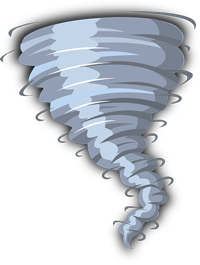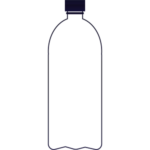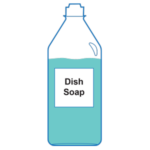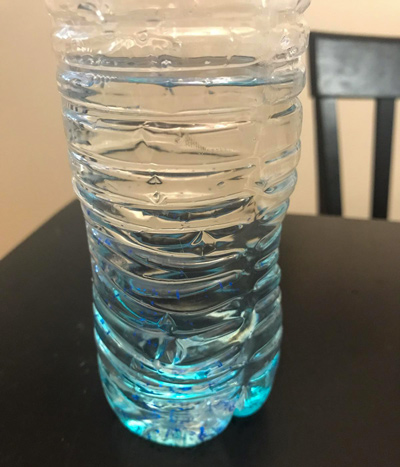Tornado in a Bottle
What is a tornado?
Have you ever practiced a tornado drill in school? Why do you think we have these drills? Tornadoes are a part of our weather system and can be very dangerous. When there is a huge thunderstorm called a supercell, tornadoes are likely. When cold, dry air and warm, wet air meet, the cold air is less dense (heavy), so it will be pushed under the warm air. The warm air is then shoved upwards super fast. The warm air then starts to roll and spin over the cold air in a circular motion. The spin is increased in speed and strength and at some point, picks up from the ground slightly. The spinning air is called a vortex. The vortex uses the energy created to travel. When the tornado loses energy, it weakens and eventually stops.
The Experiment
Create a tornado with your own hands and watch the vortex form. As this vortex is formed in your bottle, think about how this may be similar to a tornado in real life.

Materials
Empty 16 oz plastic bottle with the lid

Dish soap with color

Glitter (optional)

Directions
STEP 1
Fill the bottle ¾ of the way with water (little more than half of the bottle).
STEP 2
Add approximately a tablespoon of dish soap and some glitter into the bottle.
STEP 3
Tighten the lid onto the bottle TIGHTLY and turn the bottle upside-down slowly!
STEP 4
Using your wrist, gently swirl the water in the bottle. A small “tornado” should form in the middle.


Dinner Talk
- What happens to the glitter in the water?
- What energy creates a vortex in the water? How is that energy made?
- How was this experiment representative of a real tornado?
- Did you know that another name for a tornado is a twister? Why do you think this is the nickname?
Extra Enrichment
- Try this experiment using 2 bottles. In one bottle, pour the water, dish soap, and glitter. Then, CAREFULLY use tape to TIGHTLY TAPE the two bottles together (where the lids would usually be) so that water can still travel through. Slowly hold the bottles with the full bottle on top. As the liquid flows into the empty bottle, swirl them. A vortex should form as the liquid is being moved.
- Ask your caregivers to view this video from SciShow Kids to learn more about the science behind how tornadoes are made.
Go to your local library and check out this book:
- Tornadoes! By Gail Gibbons



